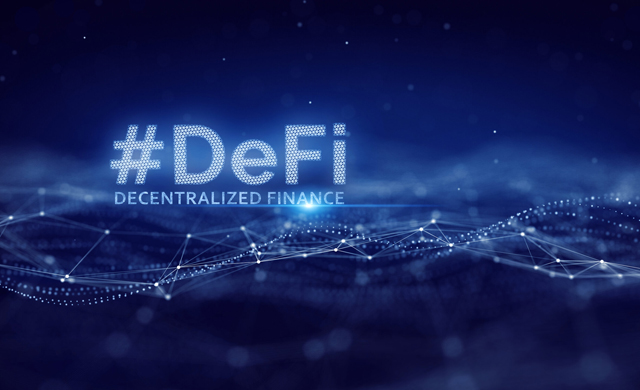Banking and finance have always been a conservative sphere where stakeholders are wary of changes. Decentralized Finance (DeFi) is to disrupt this state of things and intends to ensure a full range of financial services through peer-to-peer transactions without conventional intermediaries. In our today’s article, we’ll speculate whether the DeFi space can really democratize the financial sector or it’s still a new story for the rich get richer.

What is DeFi and what advantages we gain by using it?
In order to take a loan for an individual or engage into trading assets for an entity, they have to apply for banks, finance service providers and relevant funds acting as finance middlemen in a centralized system. But as more and more industries are undergoing digital transformation, the financial sector is also involved. Decentralized finance, or DeFi, disrupts this conventional practice and embraces an ecosystem of financial services to be provided without finance intermediaries using blockchain technology.
“Decentralized finance is an unbundling of traditional finance,” says Rafael Cosman, CEO of TrustToken. According to him, “DeFi takes the key elements of the work done by banks, exchanges and insurers today – like lending, borrowing and trading – and puts it in the hands of regular people.” The DeFi space exploded in 2020 growing from $700 million by December 2019 to $13 billion on December 31, 2020.
DeFi is based on cryptocurrency and blockchain technology to enable financial transactions. If you operate your banking transactions, they are recorded in a bank’s ledger owned and controlled by the bank. Blockchain delivers an identical public ledger with records of all transactions in encrypted code for all parties. This ensures anonymity for users, payment verification and a record of ownership. What is important is that transactions are fully operated by parties themselves in a transparent way.
Why is the DeFi space called a story for the rich to get richer?
DeFi is sometimes described as a tool for the rich to get richer as more corporate and institutional investors enter the market. Besides, as cryptocurrency costs skyrocket, this is also in favor of the rich-getting-richer story.
However, at a closer look, the DeFi space could be more inclusive due to a more simple and lower barrier for the market entry, on the one hand. On the other hand, Decentralized Finance can treat lower-income individuals the same way as large institutional investors.
“In theory, this is much more inclusive than the traditional financial system where the realities of credit scoring, regulations, and profit motive mean certain user groups get better terms than others,” says Nick Pappageorge, Analyst at Delphi Digital.
Another pro about DeFi is the guarantee of safety because the platforms don’t change terms suddenly. If you have a few dollars, you can get on board by installing the relevant apps on your computer or smartphone. You will never lose control over your assets and be able to get them back whenever you want. From the logistical perspective, there’s no need to comply with business hours to take a loan. All you need to enter the DeFi space is a smartphone and Internet access.
How do things stand in practice?
Below we describe some DeFi-related use cases to show how the DeFi space works and who may be involved into these offers.
- Insurance. In February 2020, following cyber-attacks on bzX, Nexus Mutual DeFi-based crypto insurance company made payouts against valid claims. “It’s never good that people are losing money because there’s a hack, but we are able to prove that the system works,” says Nexus Mutual founder Hugh Karp.
- Rewards. Some apps like Fold allow consumers to earn bitcoin when making purchases at retailers. This removes the barrier for cryptocurrency adoption and engages the average person with bitcoin without investing many efforts.
- Interest. Customers may “unbank themselves” when taking advantage of Decentralized Finance wallets to earn interest on bitcoin, and other crypto, or take a loan with cryptocurrency as collateral.
- Peer-to-peer lending. Zano, a stable and secure coin for e-commerce, is used for P2P and e-commerce transactions.
Generally, DeFi practices deliver new possibilities and cover many basic functions of a conventional financial system with a shorter time and wider access to market. There is also a favorable opinion that if millennials generation invested at least five percent in bitcoin, this could result into the price of bitcoin to $350,000 in 2044.
Bottomline
While DeFi technologies really have the potential to increase access to their advantages to everyone, this is still complicated and requires educating for the average person. And while many companies have already or are planning to invest into financial software of future, it will be interesting to see how traditional finance actors will react when more fundamental financial instruments move to the DeFi space and drive away more customers.














